Making Homemade Dolls: Empowering Crafts for Kids
Creating homemade dolls is not just a fun activity; it's a journey that empowers kids to explore their creativity and imagination. Imagine a world where children can bring their unique characters to life with just a few materials and a sprinkle of inspiration! The process of making dolls allows kids to dive into a realm of possibilities, where they can express their emotions, develop new skills, and even learn about sustainability. With each stitch and glue application, they are not just crafting; they are building confidence and self-esteem, which are essential for their growth.
When children engage in crafting, they are not merely passing time; they are developing fine motor skills, enhancing their creativity, and improving their concentration. The act of creating something with their hands can be incredibly fulfilling, providing a sense of accomplishment that boosts their emotional well-being. Furthermore, through hands-on activities like doll-making, kids learn the importance of patience and perseverance. They discover that mistakes are part of the creative process, and each error is a stepping stone to mastering their craft.
As parents and educators, encouraging such creative outlets can lead to profound benefits for children. Not only does crafting stimulate their imagination, but it also fosters social skills as they share their creations with others. Think about it: when kids make dolls, they often create stories and scenarios, inviting friends and family into their imaginative worlds. This not only enhances their storytelling abilities but also cultivates empathy as they navigate different perspectives during playtime.
In this article, we will explore the various aspects of doll-making, including the materials needed, the crafting process, and the incredible benefits that come from this empowering activity. By the end, you’ll see that making homemade dolls is more than just a craft—it's a gateway to creativity, emotional expression, and a whole lot of fun!
Crafting is an invaluable activity for children, offering a multitude of benefits that extend beyond simple enjoyment. When kids engage in crafting, particularly in activities like doll-making, they develop essential skills that will serve them throughout their lives. For instance, the process helps enhance fine motor skills as they learn to manipulate various materials and tools. This is crucial for their overall development, as these skills are foundational for tasks such as writing and self-care.
Moreover, crafting encourages creativity and imagination. As children design and create their dolls, they are not just following instructions; they are making choices about colors, shapes, and materials that reflect their personal style. This freedom fosters a sense of ownership and individuality, allowing them to express their thoughts and feelings in a tangible way.
Additionally, crafting can significantly improve a child's concentration. The focus required to cut, sew, and assemble doll parts helps children learn to concentrate on tasks, which can translate to improved performance in school and other activities. Ultimately, the emotional benefits of crafting cannot be overlooked. It provides a healthy outlet for expressing feelings, reduces stress, and can even enhance social skills through collaborative projects.
Now that we understand the benefits of crafting, let’s dive into the materials needed for making homemade dolls. The beauty of doll-making is that it can be done with a variety of materials, allowing children to unleash their creativity while ensuring safety during the crafting process. Here are some essential materials you might consider:
- Fabric: Cotton, felt, and fleece are popular choices that are easy to work with and safe for children.
- Yarn: Great for hair and embellishments, yarn adds texture and personality to dolls.
- Buttons: Perfect for eyes or decorative elements, buttons can enhance the doll's appearance.
- Stuffing: Polyester fiberfill or natural materials can give the doll a cuddly shape.
By providing a range of materials, you encourage children to experiment and innovate, making each doll a unique creation. They can mix and match fabrics, use recycled materials, or even incorporate items from nature, turning the crafting experience into a delightful adventure.
Q: What age is appropriate for kids to start making dolls?
A: Children as young as 5 can start with simple doll-making projects, while older kids can tackle more complex designs.
Q: Are there any safety concerns with materials?
A: Always choose non-toxic and safe materials. Supervise younger children when using scissors or hot glue.
Q: Can doll-making be a group activity?
A: Absolutely! Doll-making can be a fun group activity that fosters teamwork and social interaction.
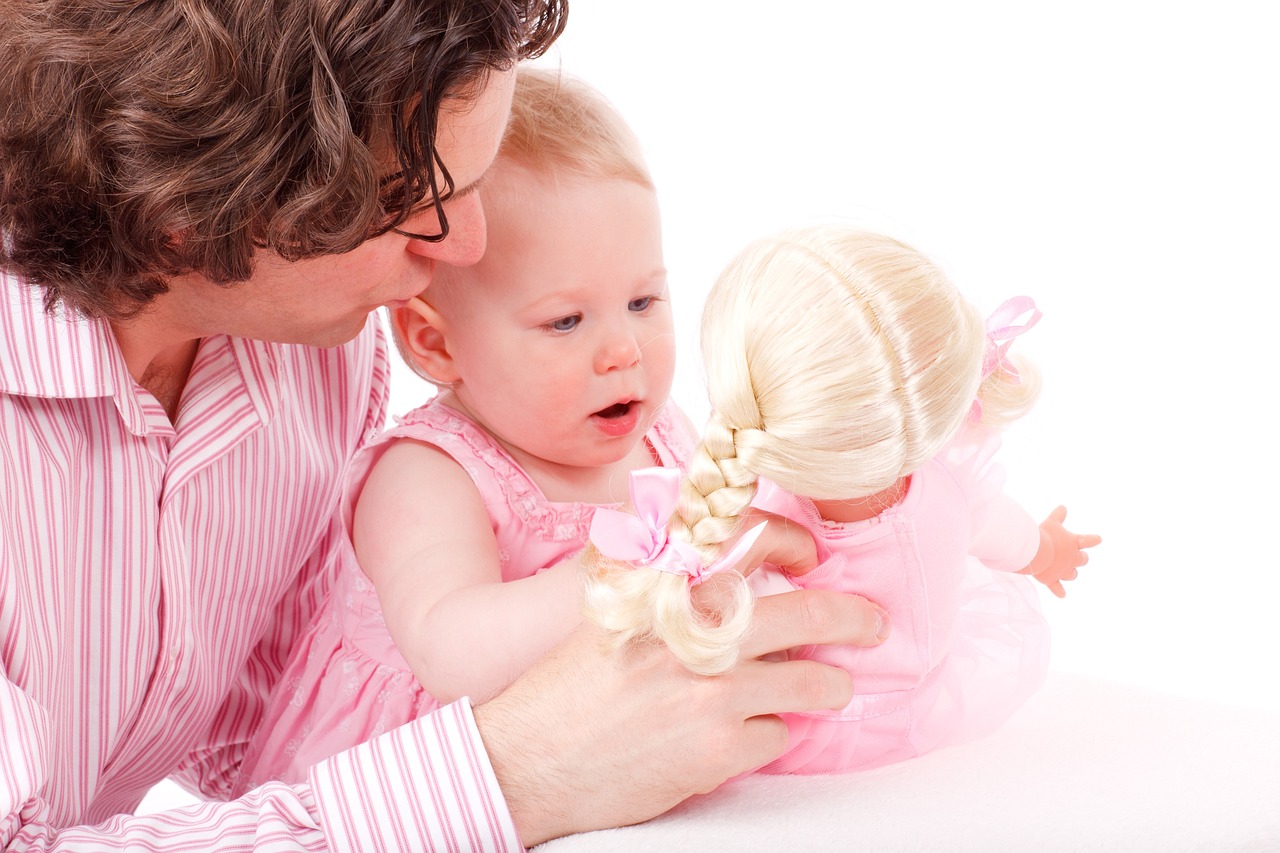
Benefits of Crafting for Kids
Crafting is not just a fun pastime for kids; it’s a gateway to numerous developmental benefits that can shape their future. When children engage in hands-on activities like doll-making, they are not only creating something unique but also honing essential skills that will serve them throughout their lives. For instance, crafting helps in developing fine motor skills. As kids cut, stitch, and glue, they improve their hand-eye coordination and dexterity, which are crucial for tasks such as writing and typing later on.
Moreover, the creative process involved in crafting enhances creativity and imagination. When children are tasked with designing their dolls, they are encouraged to think outside the box. This creative freedom allows them to explore various ideas and implement them, fostering an environment where innovation thrives. The ability to create something from scratch not only boosts their self-esteem but also instills a sense of accomplishment.
Another significant benefit of crafting is its positive impact on concentration and focus. In a world filled with distractions, engaging in a focused task like doll-making helps children learn how to concentrate on one thing at a time. This ability to focus can translate to better performance in school, as they become more adept at completing assignments and paying attention during lessons.
Furthermore, crafting promotes emotional well-being. It serves as a form of self-expression, allowing children to convey their feelings and thoughts through their creations. When they see their ideas come to life, it can lead to feelings of happiness and satisfaction. In fact, studies have shown that engaging in creative activities can reduce stress and anxiety levels, making crafting a great tool for emotional regulation.
In conclusion, the benefits of crafting for kids are manifold. From enhancing fine motor skills and creativity to improving concentration and emotional health, the act of making something with their hands can have lasting positive effects. So, the next time your child asks to craft, remember that they are not just having fun; they are also building a foundation for their future success!
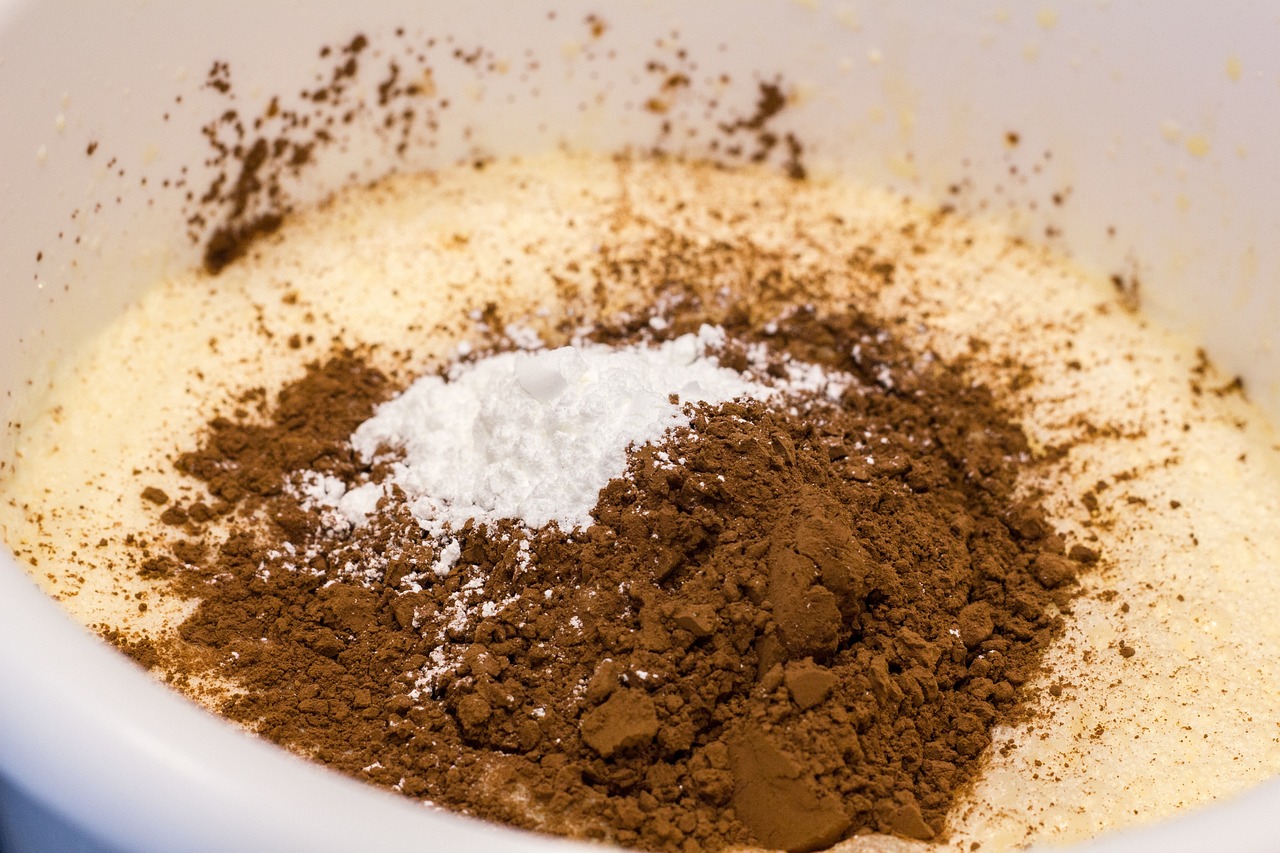
Materials Needed for Doll Making
When diving into the delightful world of doll-making, having the right materials at hand can make all the difference. The beauty of crafting your own dolls lies not only in the end product but also in the process of creation itself. Kids can explore their creativity and express their personalities through the materials they choose. So, what do you need to get started? Let's break it down!
First and foremost, fabric is a key component. You can use a variety of fabrics to create unique textures and appearances for your dolls. Cotton is a popular choice due to its softness and ease of use, making it perfect for beginners. Felt is another great option, as it comes in a multitude of colors and does not fray, which means less hassle during the crafting process. Fleece is also a fantastic choice, providing a cozy feel that kids will love. Each fabric type offers something different, allowing for endless creativity!
In addition to fabric, you’ll want to gather some stuffing material to give your doll a plush feel. Polyester fiberfill is commonly used and is safe for children. It’s light, fluffy, and can be easily shaped to create the perfect doll. Don’t forget about buttons and yarn! Buttons can be used for eyes or decorative elements, while yarn can be transformed into beautiful hair. The combination of these materials not only adds personality to each doll but also encourages kids to think outside the box.
To make the crafting experience even more exciting, consider incorporating recyclable materials. Items like old clothes, cardboard, and even plastic bottles can be repurposed into doll components. This not only sparks creativity but also teaches children about sustainability and the importance of reusing materials. Imagine turning an old sock into a sock doll or using a cardboard tube as a doll's body—it's all about seeing potential where others might see waste!
Now, let’s talk about the tools needed for this endeavor. Basic tools such as scissors, needles, and glue are essential for assembling your doll. Teaching children how to use these tools safely can enhance their crafting skills and boost their confidence. For younger children, safety scissors and glue sticks are great alternatives that minimize risk while still allowing for creativity. As they grow, they can gradually learn to use more advanced tools.
In summary, the materials needed for doll-making can be as simple or as elaborate as you want them to be. The key is to encourage creativity and ensure safety throughout the process. By using a mix of fabrics, stuffing, embellishments, and tools, children can create unique dolls that reflect their individuality. So gather your materials, roll up your sleeves, and let the crafting adventure begin!
- What is the best fabric for beginners? Cotton is highly recommended for beginners due to its ease of use and versatility.
- Can I use recycled materials for doll-making? Absolutely! Recycled materials not only add a creative twist but also promote sustainability.
- What age is appropriate for kids to start doll-making? Kids as young as 5 can start with simple projects under adult supervision, while older children can tackle more complex designs.
- How can I ensure the materials are safe for my child? Always choose non-toxic, child-safe materials. Look for labels that indicate safety standards.

Choosing Safe Materials
When it comes to making homemade dolls, one of the most important aspects is ensuring that the materials used are safe and non-toxic. Children are naturally curious and often explore their surroundings by touching and tasting things, which makes it essential for parents to choose materials that won't harm them. This means selecting items that are free from harmful chemicals, sharp edges, and small parts that could pose a choking hazard. By prioritizing safety, you create a nurturing environment where children can unleash their creativity without any worries.
To help you navigate the world of crafting materials, here are some key considerations:
- Non-toxic options: Always look for labels that indicate the materials are non-toxic. This is particularly crucial for items like paints, glues, and fabrics.
- Age-appropriate tools: Ensure that any tools used, such as scissors or needles, are suitable for the child's age and skill level. For younger children, consider using safety scissors or glue sticks that are easy to handle.
- Quality over quantity: Sometimes, less is more. Focusing on a few high-quality materials can be more beneficial than having a wide range of low-quality items that might not be safe.
In addition to these considerations, involving children in the selection process can be a great learning opportunity. Ask them questions about what materials they think would be best for their dolls and why. This not only teaches them about safety but also empowers them to make informed decisions. As they learn to differentiate between safe and unsafe materials, they develop a sense of responsibility towards their crafting projects.
Ultimately, choosing safe materials is about creating a fun and secure crafting experience. By taking the time to select the right items, you are not only protecting your child but also fostering a love for creativity and hands-on activities that can last a lifetime.
1. What types of materials are safe for making dolls?
Most fabrics like cotton, felt, and fleece are safe. Additionally, look for non-toxic paints and glues to ensure safety during the crafting process.
2. How can I ensure that the tools used are safe for my child?
Choose tools that are age-appropriate, such as safety scissors for younger children and blunt needles for sewing. Always supervise their use of any tools.
3. Can I use recycled materials for doll-making?
Absolutely! Items like old clothes, cardboard, and plastic can be creatively transformed into doll components, promoting both creativity and sustainability.
4. What should I do if my child has allergies?
If your child has allergies, be sure to check the labels for allergens and consider using hypoallergenic materials to avoid any reactions.

Fabric Options
When it comes to making homemade dolls, the choice of fabric can significantly influence the overall look and feel of the finished product. Using the right materials not only enhances the aesthetic appeal but also ensures that the dolls are safe and comfortable for children to play with. There are several fabric options to consider, each offering unique textures and characteristics that can spark creativity in young crafters.
One of the most popular choices is cotton. This fabric is widely available, easy to sew, and comes in a myriad of colors and patterns. Cotton is breathable and soft, making it a fantastic option for doll bodies and clothing. Kids can easily handle cotton, allowing them to practice their sewing skills without frustration. Plus, the vibrant prints can inspire imaginative designs that reflect their personal style.
Felt is another excellent fabric for doll-making. Its thicker texture provides structure, making it ideal for creating dolls that stand upright. Felt is also forgiving for beginners, as it doesn’t fray easily, which means less hassle during the crafting process. Children can cut and glue felt into various shapes, allowing them to create unique features like hair, accessories, and even facial expressions. The wide range of colors available in felt can ignite a child’s imagination, encouraging them to experiment and innovate.
For a softer and fluffier feel, fleece is a wonderful option. This fabric is incredibly cozy and adds a touch of warmth to any doll. Fleece is great for making cuddly dolls or stuffed toys, as it is soft against the skin and perfect for snuggling. Additionally, fleece can be sewn or glued together with ease, making it accessible for kids of all ages. Its versatility allows for creative freedom, as children can mix and match different colors to create their dream dolls.
Ultimately, the choice of fabric will depend on the type of doll being made and the preferences of the child. By introducing various fabrics, parents can encourage kids to explore textures and colors, which can lead to a richer crafting experience. Whether it’s the softness of fleece, the versatility of cotton, or the fun of felt, each fabric option opens up a world of possibilities for young creators.
In addition to these traditional fabrics, incorporating recyclable materials can also enhance the doll-making experience. Using old clothes, scraps of fabric, or even cardboard can not only promote sustainability but also add a personal touch to the dolls. This approach encourages children to think creatively and resourcefully, turning what might be considered waste into beautiful, handcrafted treasures.

Recyclable Materials
In today's world, where sustainability is more than just a buzzword, incorporating into doll-making can transform a simple craft into an eco-friendly adventure. By using items that might otherwise end up in the landfill, children not only get to unleash their creativity but also learn valuable lessons about environmental responsibility. Imagine turning an old sock into a quirky doll or using scraps of cardboard to create a unique dress! The possibilities are endless, and the excitement of repurposing materials can spark a child's imagination like nothing else.
Some fantastic recyclable materials to consider include:
- Old Clothes: A worn-out t-shirt can be cut into fabric pieces for doll outfits, while mismatched socks can become the body of a fun sock puppet.
- Cardboard: Boxes and tubes can be transformed into doll accessories, furniture, or even the doll itself with a little creativity and some crafting glue.
- Plastic Containers: Empty yogurt cups or bottle caps can serve as heads or bases for dolls, giving them a new life instead of being thrown away.
- Papers and Magazines: Colorful pages can be used for clothing or decorations, allowing children to create vibrant and unique designs.
Using recyclable materials not only encourages creativity but also fosters a sense of achievement in children. They learn that they can create something beautiful and fun from what might seem like trash. This process of transformation is akin to a magician pulling a rabbit out of a hat—every time they make something out of recycled materials, they perform a little magic of their own! Plus, it’s a wonderful way to instill values of sustainability and resourcefulness at a young age.
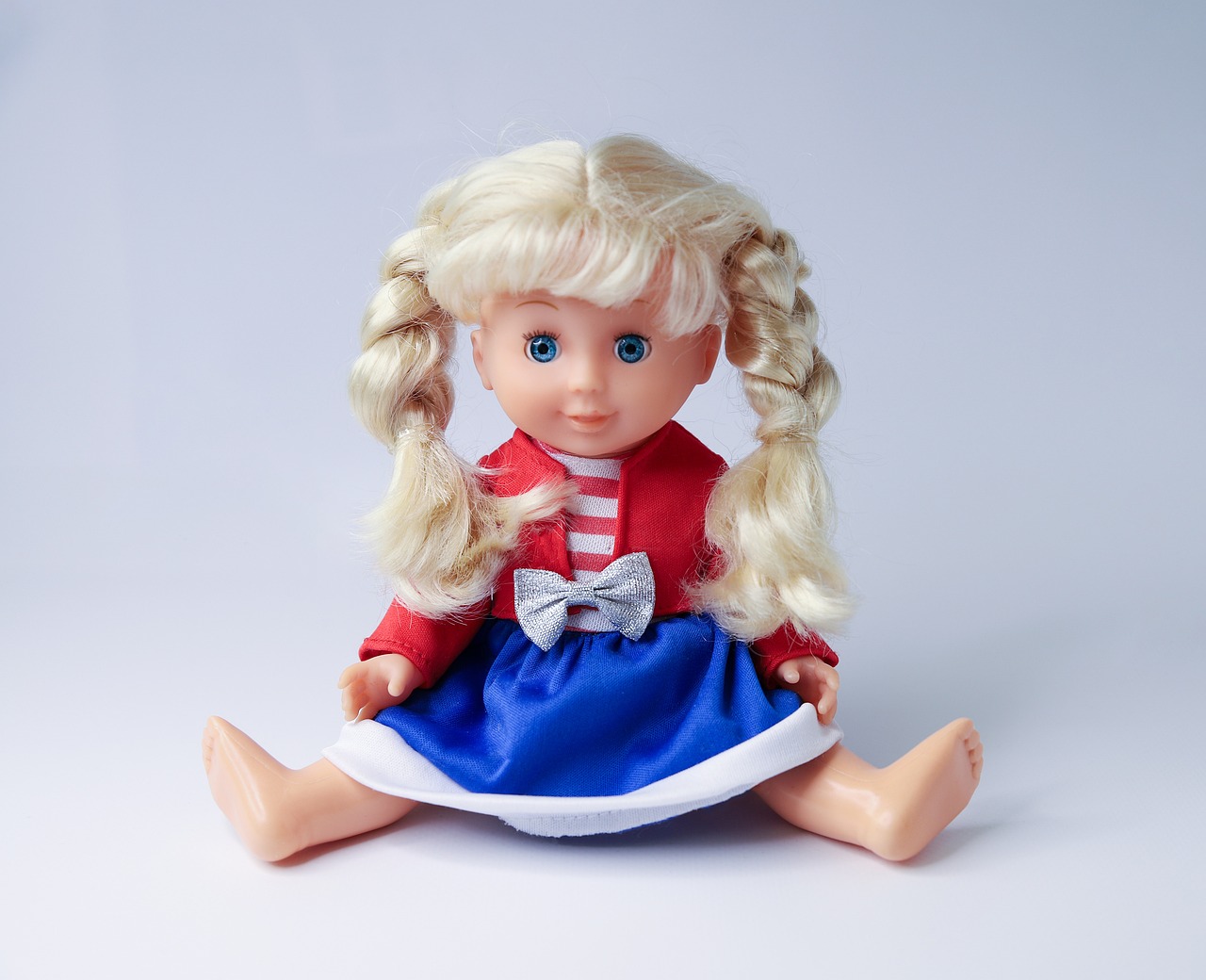
Tools for Doll Making
When it comes to crafting homemade dolls, having the right tools can make all the difference. Imagine trying to build a house without a hammer or nails; it just wouldn’t work! Similarly, the tools you choose can either enhance the crafting experience or make it frustrating. For kids, learning to use these tools safely is not only essential for their doll-making journey but also a fantastic opportunity to build confidence and learn responsibility.
Here are some of the basic tools that are essential for doll-making:
- Scissors: A good pair of scissors is fundamental. Kids will need them to cut fabric and other materials. It’s crucial to teach them how to handle scissors properly to avoid accidents.
- Needles: For those who want to dive into sewing, needles are a must. There are child-safe, blunt needles available that can help kids learn basic sewing techniques without the risk of injury.
- Thread: Choosing colorful threads can add a fun element to the crafting process. Kids can learn how to thread needles and practice their sewing skills.
- Glue: For a quicker assembly, glue is an excellent alternative. Craft glue or hot glue can be used, but supervision is necessary, especially with hot glue, to prevent burns.
- Markers and Paints: Once the doll is assembled, kids can unleash their creativity by decorating with markers or paints. This step allows for personalization, making each doll unique.
In addition to these tools, having a designated crafting space can significantly enhance the experience. A clean, organized area allows children to focus on their creativity without distractions. Consider using a large table where they can spread out their materials and tools comfortably. Also, having a storage box for all their supplies will teach them about organization and taking care of their crafting tools.
Lastly, don't forget about safety! Always supervise young children while they are using tools, and encourage them to ask for help whenever they feel unsure. This not only ensures their safety but also reinforces the idea that crafting is a collaborative and enjoyable activity. With the right tools and guidance, kids can embark on an exciting journey of creativity and self-expression through doll-making!

Step-by-Step Doll-Making Process
Creating a homemade doll can be an incredibly rewarding experience for children, as it not only allows them to express their creativity but also teaches them valuable skills along the way. To ensure a smooth crafting journey, it's important to follow a structured process that breaks down each stage of doll-making into manageable steps. This way, kids can fully immerse themselves in the fun without feeling overwhelmed. Let's explore the key stages in the doll-making process, turning a simple idea into a cherished handmade creation.
First and foremost, the journey begins with designing your doll. Encourage the children to grab some paper and colored pencils and let their imaginations run wild! This is the perfect opportunity for them to sketch out their ideas, considering everything from the doll's appearance to the clothes it will wear. By visualizing their creations, children can better understand the components they will need and how they want their finished doll to look. This step not only boosts creativity but also helps them develop planning skills.
Once the design is complete, it’s time to gather the necessary materials. This includes the fabric, stuffing, and any embellishments they might want to add. Assembling all the materials before diving into the crafting process can save time and prevent frustration. Here’s a quick checklist of what they might need:
- Fabric (cotton, felt, fleece)
- Stuffing (polyester fiberfill or cotton)
- Buttons, ribbons, or other decorative items
- Basic sewing supplies (needles, thread, scissors, glue)
Now, onto the exciting part: assembling the doll! Depending on the age and skill level of the child, they can either sew or glue the pieces together. For younger kids, using hot glue can be a quick and easy alternative, while older children may enjoy practicing their sewing skills. Start by cutting out the fabric pieces according to the design and then carefully stitch or glue them together, ensuring that the doll’s body is secure. Remember, this is where creativity shines, so feel free to add unique touches like embroidered faces or custom outfits!
As the doll starts to take shape, the next step is decorating. This is where the real fun begins! Children can personalize their dolls with a variety of materials. They might want to add buttons for eyes, ribbons for hair, or even paint to create unique facial expressions. Encourage them to think outside the box and use their imagination to make their doll truly one-of-a-kind. This step not only enhances the doll's character but also allows kids to take pride in their handiwork.
Finally, once the dolls are completed, it’s time for the best part: imaginative play! Encourage children to create stories and scenarios for their dolls. This can be a fantastic way for them to engage in role-playing, which helps develop their social skills and emotional intelligence. As they play, they can explore various narratives, allowing them to express their feelings and understand different perspectives. Plus, it's a great way for them to bond with their friends and family as they showcase their creations!
Q: What age is appropriate for children to start making dolls?
A: Generally, children aged 5 and up can begin making simple dolls with supervision. As their skills develop, they can tackle more complex projects.
Q: What materials are safest for children to use?
A: Always opt for non-toxic, child-safe materials. Cotton, felt, and other natural fabrics are great choices, and ensure any glue or paint is also labeled as safe for children.
Q: Can we use recycled materials?
A: Absolutely! Recycled materials not only add a unique touch to the dolls but also promote sustainability. Old clothes, cardboard, and other household items can be creatively repurposed.
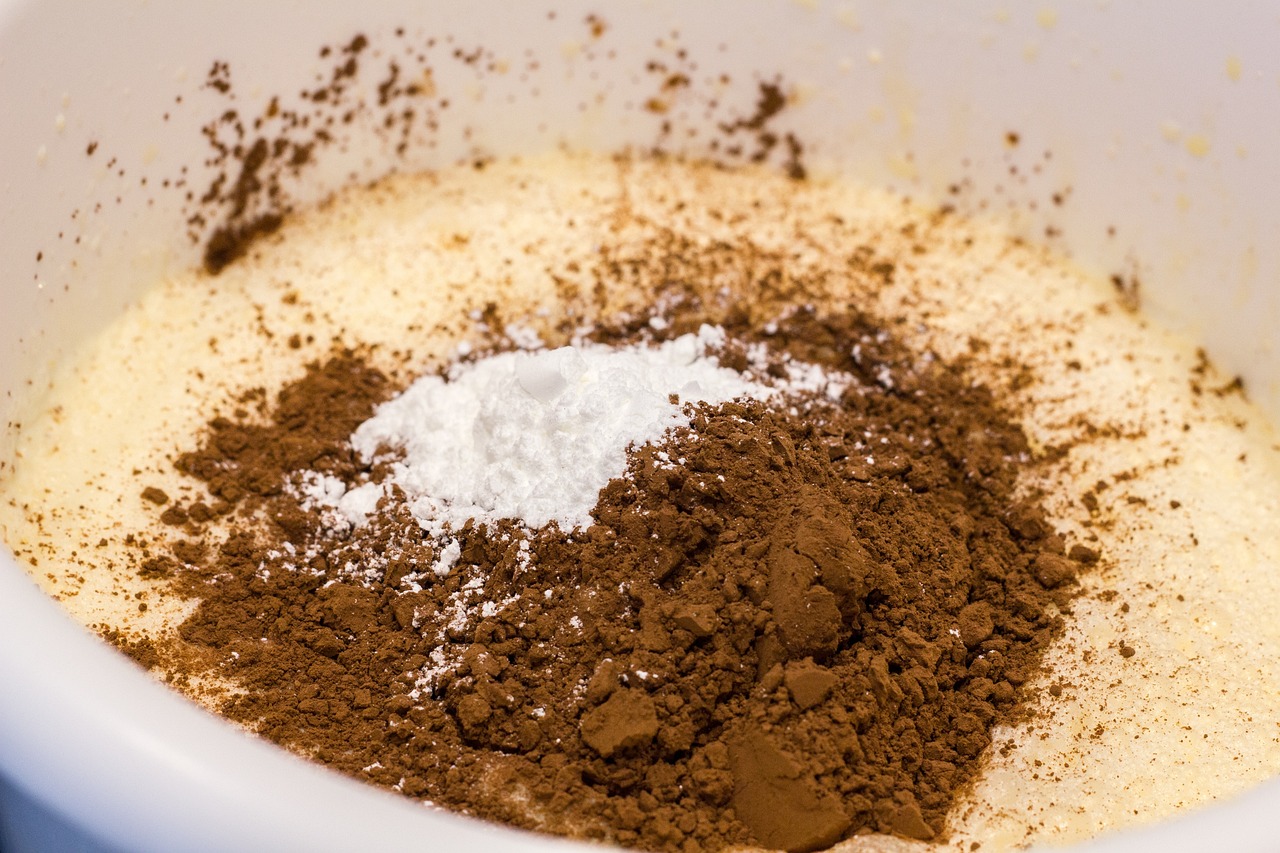
Designing Your Doll
Designing your doll is where the magic truly begins! This step is like opening a treasure chest of creativity, allowing children to dive into their imaginations. By encouraging kids to sketch their doll designs, you not only help them express their individuality but also ignite a spark of excitement that will carry through the entire crafting process. Imagine the joy on their faces when they see their unique creations come to life!
When children sit down with a piece of paper and a pencil, they embark on a journey of self-discovery. They can think about what kind of doll they want to create. Is it a brave knight, a whimsical fairy, or perhaps a character from their favorite story? The possibilities are endless! This brainstorming phase is crucial because it allows kids to visualize their final product before they even pick up the scissors or glue. It’s like laying the foundation of a house before building the walls.
During this design phase, children can consider various aspects of their dolls, such as:
- Appearance: What colors will they use? What kind of hair will the doll have?
- Clothing: Will the doll wear a dress, a suit, or perhaps something entirely unique?
- Accessories: Hats, bags, or even tiny pets can add a personal touch to their creations.
It's also a fantastic opportunity for parents to engage with their children. Ask questions like, "What story will your doll tell?" or "Where does your doll live?" These prompts can stimulate deeper thinking and help children develop a narrative around their creations. This blend of creativity and storytelling not only enhances their artistic skills but also nurtures their cognitive development.
Once they have sketched their ideas, it’s time to gather the materials needed to bring their designs to life. This is where the real fun begins! Children can sift through fabric scraps, buttons, and other supplies to find the perfect elements that match their vision. It’s like being a fashion designer, selecting the perfect fabric for a runway show!
In conclusion, the design phase is more than just a preliminary step; it’s a vital part of the doll-making process that fosters creativity, encourages self-expression, and builds excitement. By allowing children to take ownership of their designs, you help them develop a sense of pride in their work, making the final product even more special. So grab those pencils, let the ideas flow, and watch as your child's imagination transforms into a beautiful, handmade doll!
Here are some common questions parents may have about the doll-making process:
- What age is appropriate for kids to start making dolls? Generally, children aged 5 and up can start crafting dolls with supervision, while older kids can handle more complex techniques.
- Can we use recycled materials for doll-making? Absolutely! Using recycled materials not only promotes sustainability but also encourages creativity.
- What if my child is not confident in their drawing skills? Encourage them to use simple shapes and stick figures. The focus is on creativity, not perfection!
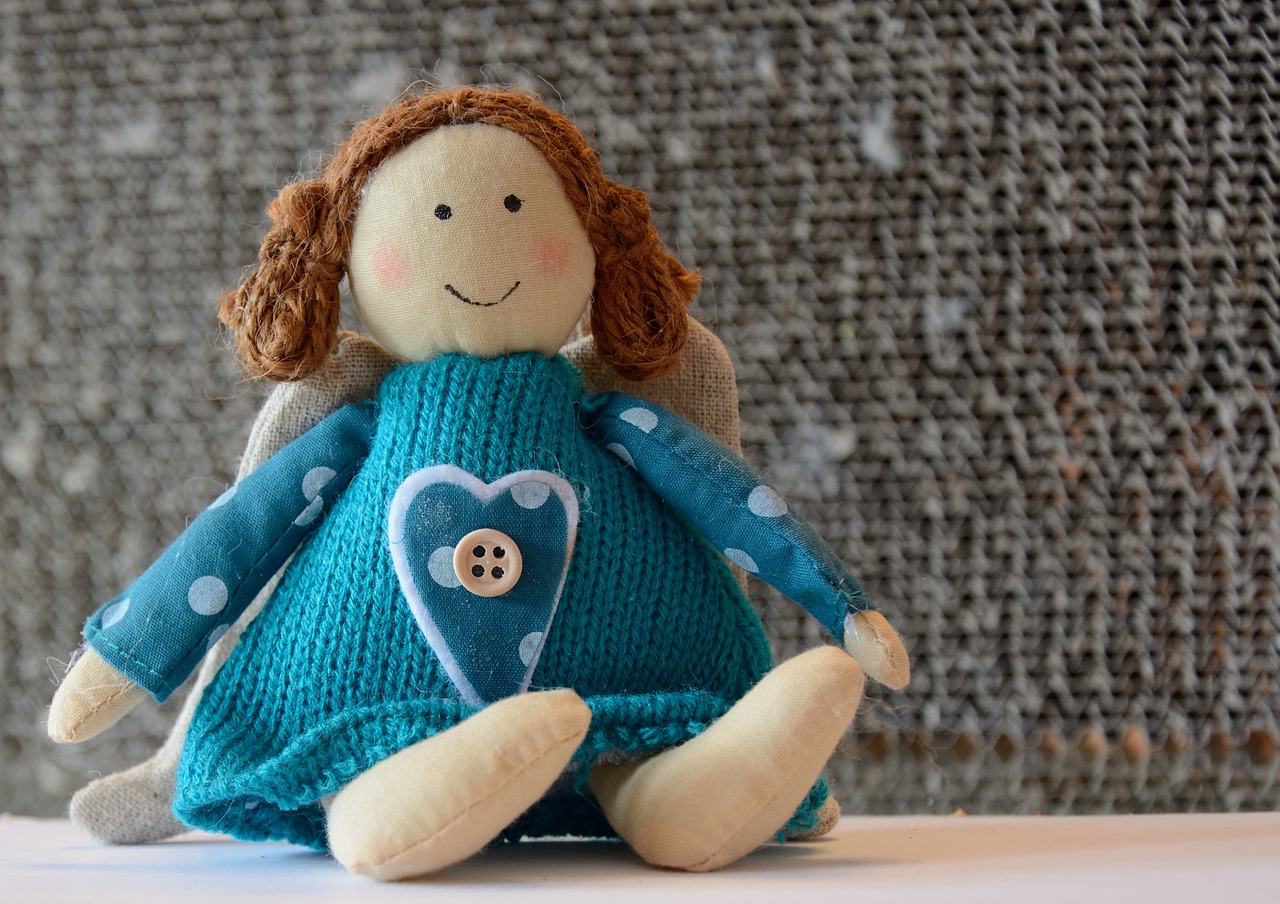
Assembling the Doll
Assembling your doll is where the magic truly begins! This phase is an exciting blend of creativity and hands-on skills, transforming your carefully crafted parts into a complete character. First, gather all the components you've prepared: the body, limbs, head, and any accessories you’ve designed. It’s like putting together a puzzle, and every piece has its own unique place!
When it comes to actually putting the doll together, you have a couple of options based on the materials you've chosen and the age of the child involved. If you’re working with younger kids, glue is often the safest and easiest method. A good quality craft glue or a hot glue gun (with adult supervision) can work wonders. Just make sure to apply enough glue to secure the parts without overdoing it, as too much can create a mess. On the other hand, if the child is a bit older and has some sewing skills, this is a fantastic opportunity to introduce basic sewing techniques.
For sewing, you can use a simple running stitch or a whip stitch to attach the limbs and head to the body. This not only reinforces their motor skills but also gives them a sense of accomplishment as they see their doll come to life with every stitch. Here’s a quick guide on how to sew the parts together:
| Step | Instructions |
|---|---|
| 1 | Align the limb or head with the body part you wish to attach. |
| 2 | Using a needle and thread, start from the inside of the body to hide the knot. |
| 3 | Make small, even stitches around the edges to secure the parts together. |
| 4 | Once secure, tie off the thread and cut any excess. |
After assembling the doll, it’s time for the fun part: decorating! This is where children can let their imaginations run wild. They can add clothing, accessories, and even draw on facial features. Encourage them to think about the personality of their doll. Is it a brave adventurer, a gentle friend, or perhaps a magical creature? Each doll can tell a story, and the decoration process allows children to express that narrative through their choices.
Lastly, remind the kids to handle their creations with care. Assembling a doll is not just about putting parts together; it's about creating a companion that they can cherish and play with. This process not only enhances their crafting skills but also builds their confidence as they see their ideas come to fruition.
- What age is appropriate for children to start doll-making? Generally, children aged 5 and older can start simple doll-making projects with supervision.
- What materials are safest for kids? Look for non-toxic fabrics, child-safe scissors, and washable glue.
- Can we use recycled materials? Absolutely! Recyclable materials can add a unique touch to your dolls and promote sustainability.

Encouraging Imagination Through Play
Once the dolls are complete, a whole new world of possibilities opens up for children. Engaging in imaginative play with their handmade dolls not only enhances their storytelling abilities but also fosters essential social skills. Imagine a child, with their unique doll in hand, weaving intricate tales of adventure, friendship, and bravery. This type of play is not just fun; it's a powerful tool for learning and emotional development.
Through role-playing scenarios, children can navigate various social situations, allowing them to develop empathy and understanding. For instance, they might create a scene where their doll helps another character in need, teaching them the value of kindness and cooperation. This interactive play encourages emotional growth and helps kids explore different perspectives, which is vital in a world that is increasingly interconnected.
Moreover, the act of storytelling through play can significantly boost a child's confidence. As they share their narratives with family and friends, they not only showcase their creativity but also receive positive reinforcement, which can further inspire them. This sharing can take many forms:
- Setting up a mini-theater in the living room where they perform scenes with their dolls.
- Creating a storybook featuring their dolls as characters, complete with illustrations.
- Inviting friends over for a doll tea party, where they can narrate stories and engage in group play.
Encouraging kids to share their doll-making experiences with others can significantly boost their confidence. When they showcase their creations, it fosters a sense of accomplishment, making them feel proud of their hard work. This sense of community engagement in crafting activities not only strengthens family bonds but also builds friendships among peers. Just think about it: when children see their friends excited about their creations, they learn the joy of collaboration and the importance of supporting one another's creative endeavors.
In conclusion, the journey of crafting dolls does not end with their creation. Instead, it blossoms into a vibrant realm of imaginative play that enriches children's lives, providing them with opportunities to learn, grow, and express themselves in meaningful ways. So, let the playtime adventures begin, and watch as your child's creativity takes flight!
Q1: What age is appropriate for children to start making dolls?
A1: Children as young as 5 can start making simple dolls with supervision. As they grow older, they can take on more complex projects.
Q2: What are some safe materials for doll-making?
A2: Non-toxic fabrics like cotton, felt, and fleece are great options. Additionally, ensure that any embellishments like buttons are securely attached to prevent choking hazards.
Q3: How can doll-making benefit my child's development?
A3: Doll-making enhances fine motor skills, boosts creativity, and encourages emotional expression. It also provides a platform for imaginative play, which is crucial for social skills development.
Q4: Can we use recycled materials for doll-making?
A4: Absolutely! Using recycled materials not only promotes creativity but also teaches children about sustainability. Old clothes, cardboard, and plastic can all be transformed into unique doll components.
Q5: How can I encourage my child to share their doll-making experiences?
A5: Encourage your child to invite friends over for playdates where they can showcase their dolls. You can also set up a family showcase night where they can present their creations and tell stories about them.

Role-Playing Scenarios
Role-playing scenarios are a fantastic way for children to dive into the imaginative worlds they've created with their homemade dolls. When kids engage in this form of play, they aren't just having fun; they're also developing critical social skills and learning how to navigate various situations. Imagine a child using their doll to enact a scene where the doll is a brave explorer on a quest. Through this playful narrative, they learn about courage, problem-solving, and even teamwork if they involve friends or siblings in the adventure.
These scenarios can take many forms, depending on the child's interests and the characters they’ve crafted. For example, a doll made to resemble a doctor can lead to a role-playing game where the child plays the part of a patient, learning empathy and care. Alternatively, a doll designed as a superhero can inspire stories of bravery and friendship, allowing kids to explore themes of justice and cooperation. The possibilities are endless, and each role-playing scenario helps children express their thoughts and feelings in a safe environment.
Moreover, role-playing can serve as a powerful tool for children to process their experiences and emotions. After a particularly challenging day at school, a child might create a scenario where their doll faces a similar situation. This not only allows them to work through their feelings but also empowers them to find solutions and cope with challenges in real life. It’s like giving them a magic mirror that reflects their thoughts and feelings, helping them understand themselves better.
To enhance the experience, parents and caregivers can encourage children to create backstories for their dolls. This not only adds depth to the play but also fosters creativity and storytelling skills. For instance, if a child decides their doll is a princess, they could invent a kingdom, loyal subjects, and even a dragon to conquer! This level of imaginative play not only keeps children entertained but also enriches their cognitive development.
In conclusion, role-playing scenarios with homemade dolls offer a rich tapestry of learning opportunities. By stepping into different roles, children can explore various aspects of life, develop empathy, and enhance their social skills. So, the next time your child picks up their doll, watch as they transform simple play into a profound learning experience!
- What age is appropriate for children to start making dolls? Generally, children as young as 5 can start with simple doll-making projects, but supervision is recommended for younger kids.
- How can I ensure the materials are safe for my child? Look for materials labeled as non-toxic and free from harmful chemicals. Always check for age-appropriate safety recommendations.
- Can role-playing scenarios help with social anxiety? Yes! Engaging in role-play can provide children with a safe space to practice social interactions, which can reduce anxiety in real-life situations.
- What if my child is not interested in doll-making? Encourage them to explore other crafting projects that align with their interests, such as building models or painting, to stimulate their creativity.
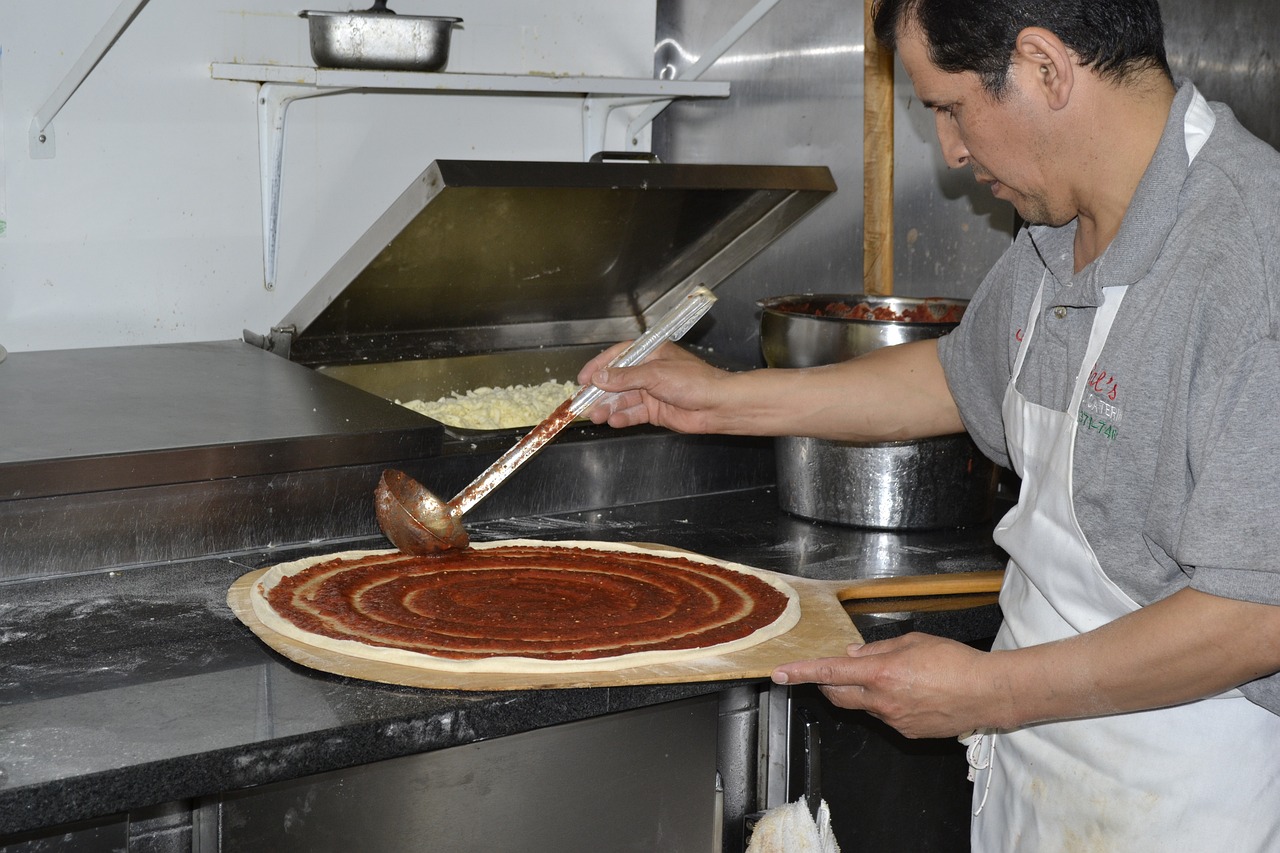
Sharing and Showcasing Creations
Once the dolls are complete, it’s time for the real fun to begin! Sharing and showcasing their creations can be a thrilling experience for children. Imagine the excitement on their faces as they present their handmade dolls to family and friends. This moment is not just about displaying their work; it’s an opportunity for kids to receive positive feedback and encouragement, which can significantly boost their confidence and self-esteem. When children feel proud of their creations, they are more likely to engage in future crafting projects, fostering a lifelong love for creativity.
One effective way to share their work is through a mini showcase event at home or in the classroom. Parents and teachers can help organize a small exhibition where kids can display their dolls and explain the inspiration behind each design. This not only enhances their public speaking skills but also allows them to articulate their thoughts and feelings about their creations. As they talk about their dolls, children are practicing storytelling, which is a vital skill for communication.
Additionally, embracing the digital age can amplify this sharing experience. Kids can take photos of their dolls and share them on social media platforms or family group chats. This not only broadens their audience but also allows them to connect with other young crafters. Parents should ensure that any online sharing is done safely, discussing privacy settings and the importance of being cautious with personal information.
Encouraging children to participate in crafting communities, whether online or in-person, can also be beneficial. They can join local crafting clubs or online forums where they can showcase their work, exchange ideas, and learn new techniques from peers. This sense of community can inspire creativity and provide a support network that fosters growth and development.
Ultimately, sharing and showcasing creations serves as a crucial step in the crafting journey. It not only validates the hard work and creativity that children pour into their projects but also encourages them to continue exploring their artistic abilities. So, whether it’s a small family gathering, a classroom exhibition, or an online post, these moments of sharing can ignite a passion for creativity that lasts a lifetime.
- What age is appropriate for kids to start doll-making?
Kids as young as 5 can start simple doll-making projects with supervision. As they grow older, they can take on more complex tasks.
- What materials are safest for children to use?
Always choose non-toxic, child-safe materials such as cotton fabric, natural yarn, and eco-friendly stuffing. Avoid small parts for younger children.
- How can I encourage my child’s creativity in doll-making?
Encourage them to think outside the box! Let them choose their designs, colors, and materials. The more freedom they have, the more creative they will be.
- Can doll-making be a group activity?
Absolutely! Doll-making can be a fun group activity at home, in schools, or at community centers, fostering teamwork and collaboration.
Frequently Asked Questions
- What are the benefits of making homemade dolls for kids?
Making homemade dolls offers a plethora of benefits for children. It helps develop fine motor skills, enhances creativity, and improves concentration. Moreover, engaging in hands-on crafting activities like doll-making promotes emotional well-being and encourages self-expression, allowing kids to channel their feelings and thoughts into their creations.
- What materials are safe for kids to use when making dolls?
When crafting with children, it's essential to select non-toxic and safe materials. Fabric options like cotton, felt, and fleece are great choices, as they are easy to work with and safe for kids. Additionally, using recyclable materials such as old clothes and cardboard can add an eco-friendly twist to the crafting process.
- How can I teach my child to use crafting tools safely?
Teaching children to use crafting tools like scissors, needles, and glue safely is crucial. Start by demonstrating the correct way to handle each tool, emphasizing safety precautions. Supervise them closely while they practice, and encourage them to ask questions if they're unsure about anything. This not only enhances their crafting skills but also boosts their confidence.
- What is the step-by-step process for making a doll?
The doll-making process typically involves several steps. First, children should sketch their designs to express their individuality. Next, they can assemble the doll by stitching or gluing the parts together. Finally, they can decorate their creations to add a personal touch. Each step is an opportunity for learning and creativity!
- How does playing with homemade dolls encourage imagination?
Once the dolls are complete, children can engage in imaginative play, which enhances their storytelling abilities and fosters social skills. By creating narratives and scenarios with their handmade dolls, kids can navigate social situations, develop empathy, and explore different perspectives, making playtime both fun and educational.
- Why is it important for kids to share their doll-making experiences?
Encouraging kids to share their doll-making experiences with family and friends can significantly boost their confidence. Showcasing their creations fosters a sense of accomplishment and promotes community engagement in crafting activities. It also allows children to receive positive feedback, which can further inspire their creativity!



















